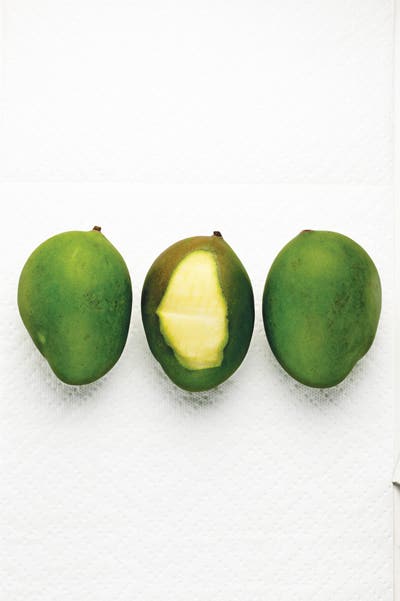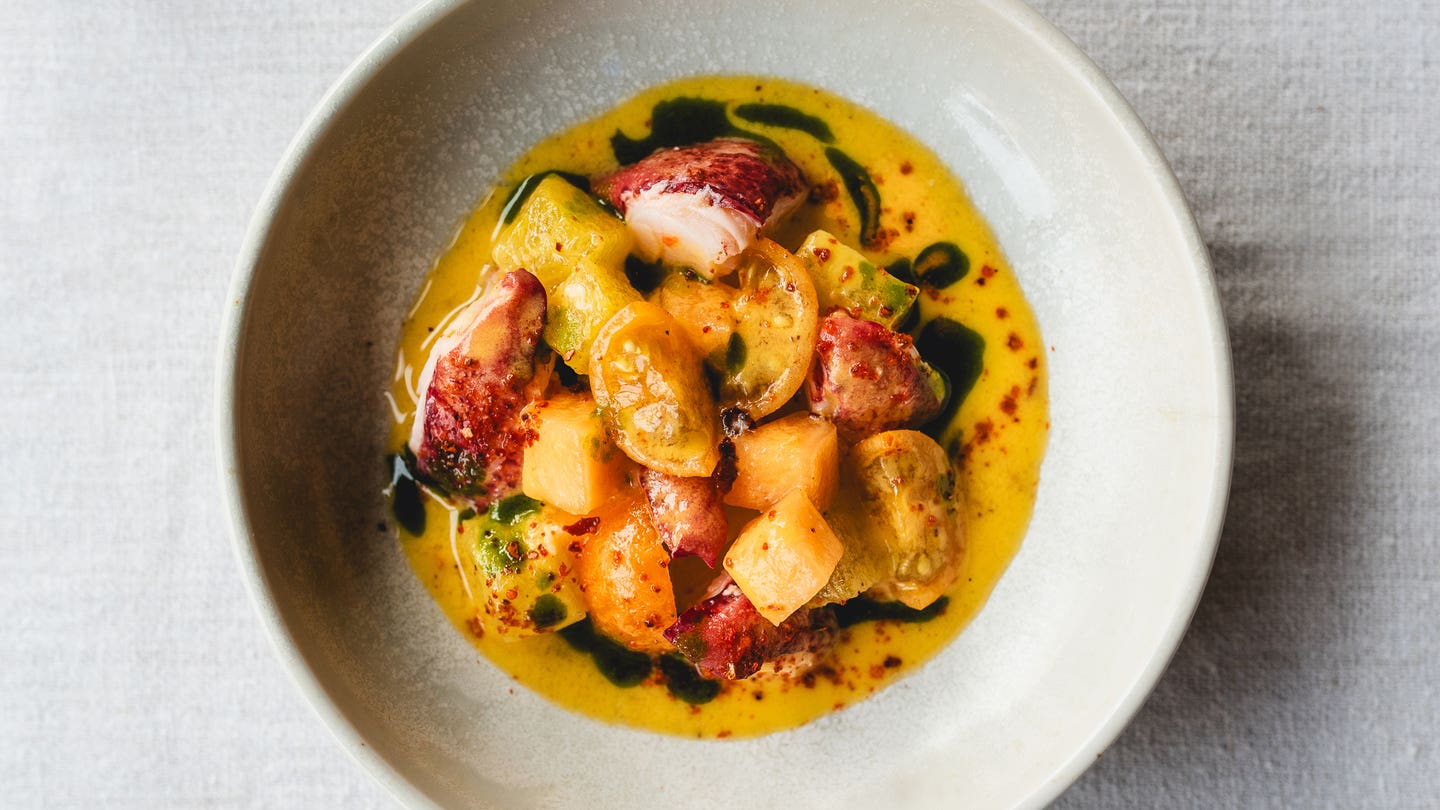
Gone Green
Is there any fruit finer than a juicy, ripe mango? Until recently I would have said no. But then our assistant kitchen director, Ben Mims, handed me a slice of an unripe mango that he was chopping up for a Thai green mango salad (see ** Thai Green Mango Salad**). I had never eaten a mango that was anything but yellow-skinned, soft, and dripping with juice. The mangoes Ben was chopping, by contrast, were firm and forest green, with a crisp, whitish-green flesh, almost like that of a Granny Smith apple. I took a bite: the fruit had a mild, tart flavor that was instantly addictive. After that first taste, I started looking around for places to buy green mangoes and found they are available in many Asian produce stores. I also discovered that green mangoes will retain their green color and firmness if stored in the fridge, for as long as three weeks. (Left at room temperature for more than a few days, a green mango, which has been picked before it has ripened on the branch, will go bad.) Unripe mango is treated more like a vegetable than a fruit in South Asia and Southeast Asia. It is used in savory dishes and tart salads, like the one Ben was making; it is cooked in rich, coconut-based curries with shrimp, fish, or pork; it goes into dals with green vegetables like spinach; it is pickled in a variety of ways, sometimes with the addition of chiles; and—my favorite preparation so far—it is simply sliced raw and sprinkled with a mixture of salt, sugar, and chile powder for a sour, sweet, and spicy treat.
Keep Reading
Continue to Next Story










